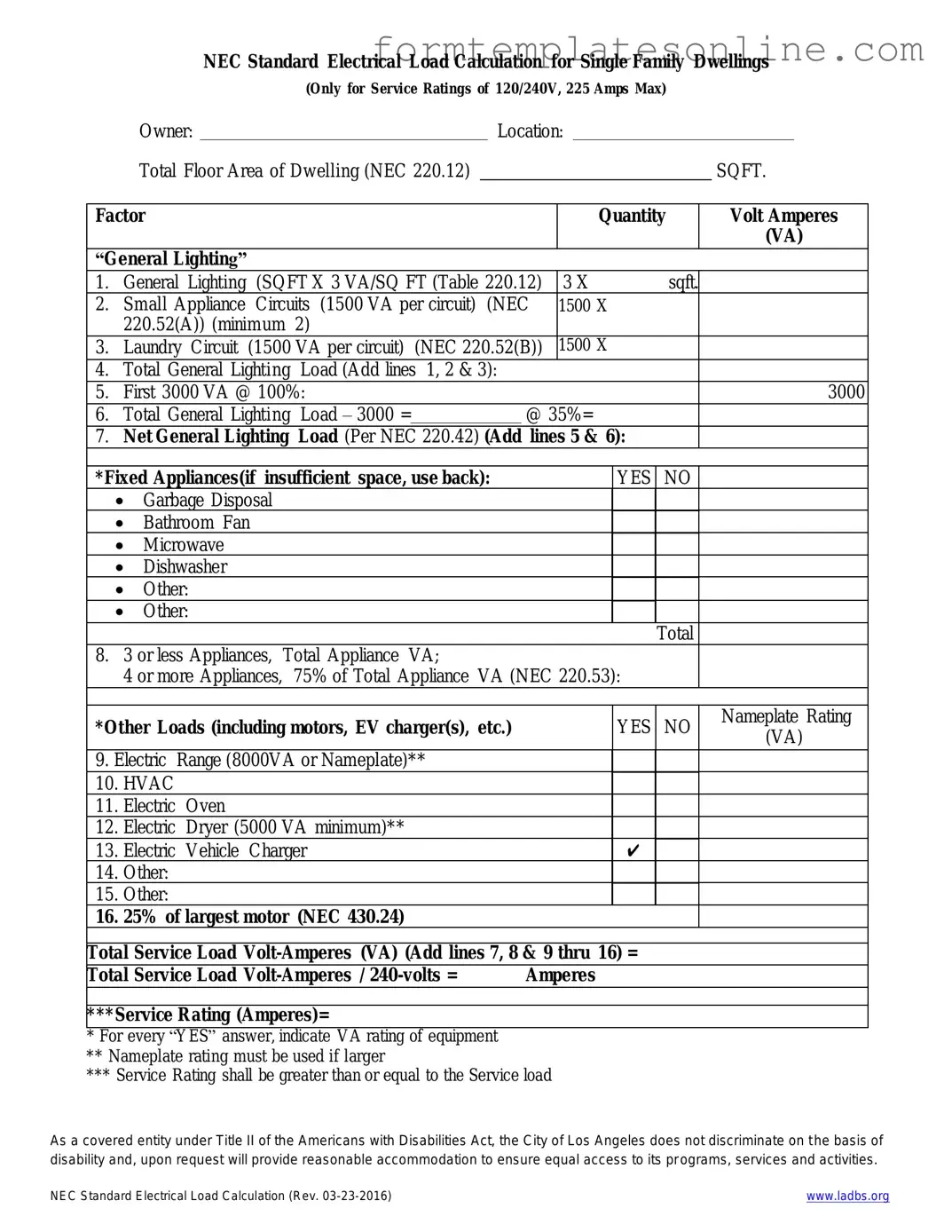What is the LADBS NEC Standard Electrical Load Calculation form?
The LADBS NEC Standard Electrical Load Calculation form is a document used by the Los Angeles Department of Building and Safety to determine the electrical load requirements for a building or structure. This form helps ensure that the electrical system can safely handle the expected load, which is crucial for compliance with safety standards and regulations.
Who needs to fill out this form?
This form must be completed by licensed electricians or electrical engineers when applying for electrical permits in Los Angeles. It is essential for residential, commercial, and industrial projects where new electrical installations or modifications are planned.
What information is required on the form?
The form requires details such as the type of occupancy, the square footage of the space, the number of circuits, and the load calculations for various electrical devices. Accurate data is crucial for determining the total load and ensuring compliance with the National Electrical Code (NEC).
How do I calculate the electrical load?
To calculate the electrical load, you will need to consider all the appliances, lighting, and equipment that will be used in the building. Each item has a specific wattage rating, which you can find on the appliance or in the manufacturer’s specifications. Add these wattages together to determine the total load. The form provides guidelines and formulas to assist in this calculation.
What happens if I do not submit this form?
Failure to submit the LADBS NEC Standard Electrical Load Calculation form can result in delays in obtaining electrical permits. Additionally, it may lead to non-compliance with local codes, which could result in fines or the need for costly modifications to your electrical system.
Where can I find the form?
The form is available on the Los Angeles Department of Building and Safety's official website. It can be downloaded and printed for completion. Ensure you are using the most current version of the form to avoid any issues during the permit application process.

